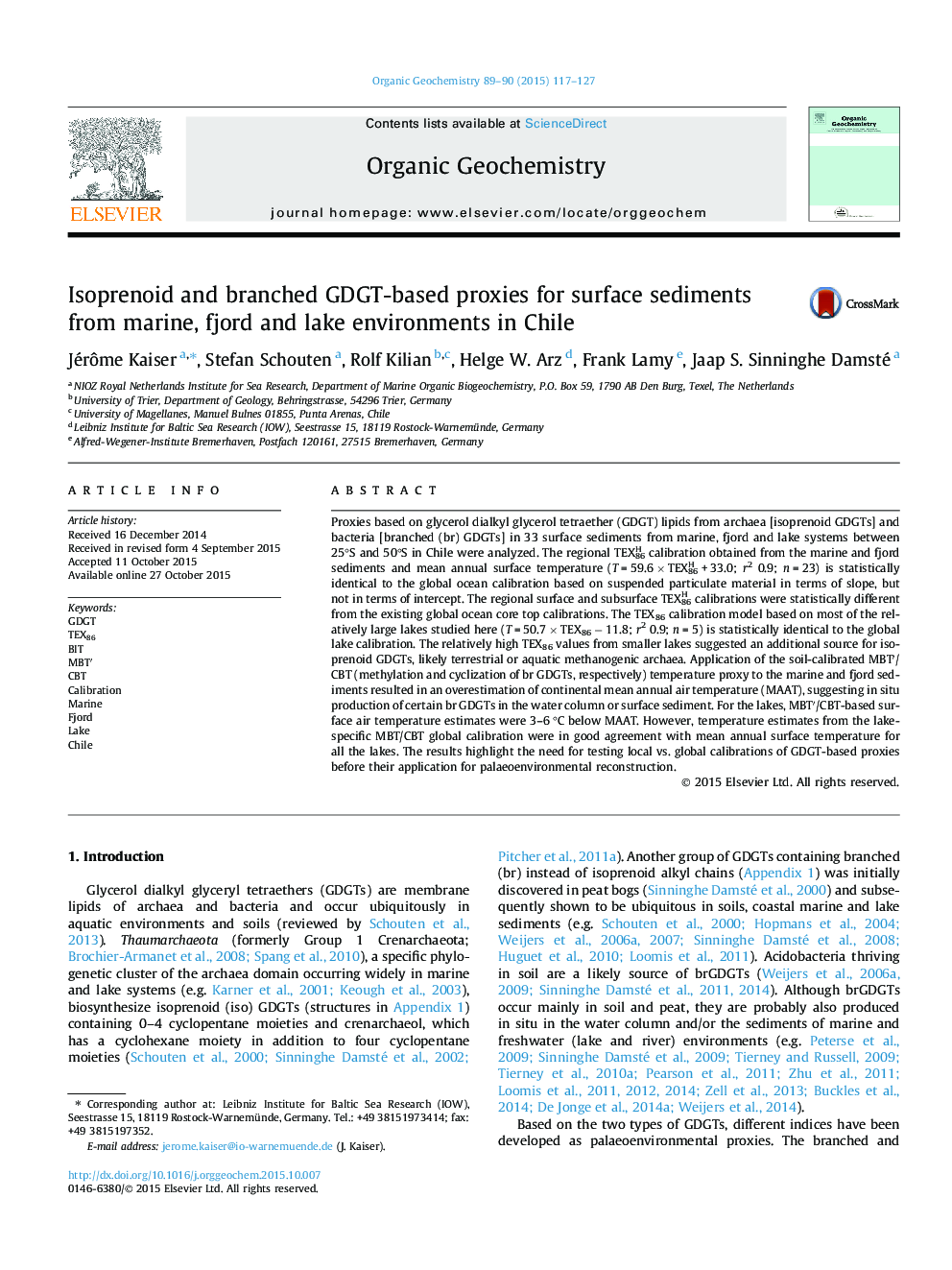| Article ID | Journal | Published Year | Pages | File Type |
|---|---|---|---|---|
| 5161885 | Organic Geochemistry | 2015 | 11 Pages |
Abstract
Proxies based on glycerol dialkyl glycerol tetraether (GDGT) lipids from archaea [isoprenoid GDGTs] and bacteria [branched (br) GDGTs] in 33 surface sediments from marine, fjord and lake systems between 25°S and 50°S in Chile were analyzed. The regional TEXH86 calibration obtained from the marine and fjord sediments and mean annual surface temperature (T = 59.6 Ã TEXH86 + 33.0; r2 0.9; n = 23) is statistically identical to the global ocean calibration based on suspended particulate material in terms of slope, but not in terms of intercept. The regional surface and subsurface TEXH86 calibrations were statistically different from the existing global ocean core top calibrations. The TEX86 calibration model based on most of the relatively large lakes studied here (T = 50.7 Ã TEX86 â 11.8; r2 0.9; n = 5) is statistically identical to the global lake calibration. The relatively high TEX86 values from smaller lakes suggested an additional source for isoprenoid GDGTs, likely terrestrial or aquatic methanogenic archaea. Application of the soil-calibrated MBTâ²/CBT (methylation and cyclization of br GDGTs, respectively) temperature proxy to the marine and fjord sediments resulted in an overestimation of continental mean annual air temperature (MAAT), suggesting in situ production of certain br GDGTs in the water column or surface sediment. For the lakes, MBTâ²/CBT-based surface air temperature estimates were 3-6 °C below MAAT. However, temperature estimates from the lake-specific MBT/CBT global calibration were in good agreement with mean annual surface temperature for all the lakes. The results highlight the need for testing local vs. global calibrations of GDGT-based proxies before their application for palaeoenvironmental reconstruction.
Related Topics
Physical Sciences and Engineering
Chemistry
Organic Chemistry
Authors
Jérôme Kaiser, Stefan Schouten, Rolf Kilian, Helge W. Arz, Frank Lamy, Jaap S. Sinninghe Damsté,
